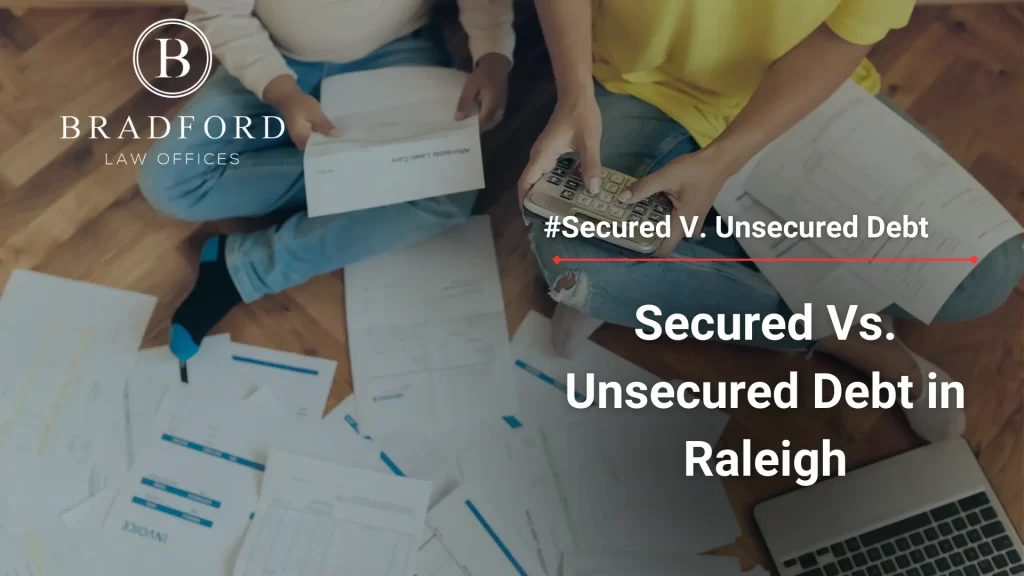
There are two main types of debt: secured and unsecured. The main difference between the two types is the provision of collateral. Secured debt is backed by collateral, while unsecured debt is backed only by your personal creditworthiness. The following explains what risks the “borrower” (the party that receives the loan) and the “lender” (the party that provides the loan) incur, and the characteristics of both types of debt.
Secured Debt
Secured debt is a loan backed by collateral, which is also called an “asset.” A borrower pledges to pay back the loan, but if they are unable to, the borrower must forfeit an asset. “Collateral” is any item that is given up in the case a loan cannot be repaid. Typically, the collateral is the item for which an individual borrows money. For example, if a borrower receives a loan for a car, the car itself will be the collateral for the loan. If the borrower cannot make the car payments on time, the ownership of the car will transfer to the lender. Or, if a borrower receives a loan for a home, the house itself will be collateral. Again, if the borrower cannot make their payments on time, the possession of the house will eventually be transferred to the lender.
Most secure debts are for “big-ticket” items like the aforementioned homes and cars. Most lenders require the item to be insured such that the value of the collateral is preserved. That way, if ownership of the asset is transferred back to the lender, it is of the same value that it was when the loan was initiated.
Because the presence of collateral makes secured debts more likely to be repaid, the interest rates for secured debts are low. The borrower’s risk is high in this situation: they are in danger of losing a valuable personal asset if they cannot pay. At the same time, the lender’s risk is greatly reduced by the presence of collateral, which is why the interest rates on the loan are likely to be comparably low. Because of the high risk to borrowers, and low risk to lenders, secured loans are also easier to obtain than unsecured loans.
If the borrower defaults on a secured loan, they might be able to avoid going to court. The collateral, or asset, would simply be seized by the lender. The asset will then be liquidated by the lender. This means that the asset will be sold off and its cash value will be collected.
Unsecured Debt
Unsecured debt is a loan that is not backed by collateral. The borrower’s promise to repay and record of creditworthiness are the only “backing” for the debt. Examples of unsecured debt include medical bills, gym memberships, and credit card bills. For these debts, the lender does not require the borrower to offer up an asset as security. Trust in the good credit and promise of repayment is the foundation of these loans.
For unsecured debts, the risks for the lender are high and the risks for the borrower are low. Due to the lack of collateral, the lender has less security. Meanwhile, the borrower incurs less risk: they are not in imminent danger of losing an asset if they are late on a payment. This difference in risk leads to high interest rates, as lenders seek to justify the risk they are taking.
The risk to lenders also makes unsecured debt less common. Because they lack the assurance that collateral provides, lenders are less likely to allow borrowers to borrow on credit alone, so the “supply” of unsecured debt is low.
If the borrower defaults on an unsecured loan, they are likely to be taken to court, or visited by a debt collector. Before this, however, the lender will charge late fees for missed payments or raise the interest rate on the loan. After charging fees and raising the interest rates to attempt to recoup their losses, the lender will send a debt collector. If this proves ineffective, and the debt collector cannot collect payment from the borrower, the lender might file a lawsuit. This lawsuit could lead to seizure of the borrower’s assets or money from the borrower’s bank account.
Contact Us
If you are suffering under the weight of debt, contact Bradford Law Offices at (919) 758-8879 today. There is no need for you to continue to struggle with seemingly insurmountable financial obstacles. Talking to an experienced Raleigh bankruptcy attorney is the first step to finding a way out of this difficulty. Our team will ease your anxiety, and help you begin to find solutions. Don’t let debt hold you back – the bankruptcy lawyers of Bradford Law Offices will provide you with top-tier legal guidance and a steadfast guide through the process of bankruptcy. Contact us at (919) 758-8879, or fill out a contact form online.